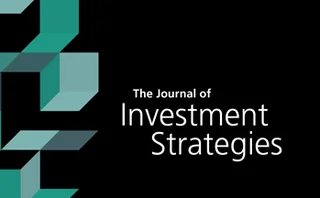Merton models
An equity-implied rating model for unrated firms
The authors use Merton's distance to default as the basis for new model with which to assign credit ratings to firms which are not traditionally rated.
Costs of capital under credit risk
In cost-of-capital computations, credit risk is only taken into consideration at the level of the debt beta approach. We show that applications of the debt beta approach in company valuation suffer from unrealistic assumptions about the market index and…
The optimal investment problem in stochastic and local volatility models
This paper considers the classical optimal investment allocation problem of Merton through the lens of some more modern approaches, such as the stochastic volatility and local volatility models.
Podcast: Richard Martin on EM debt, copulas, machine learning
Quant sceptical of machine learning algos and black boxes
A credit portfolio framework under dependent risk parameters: probability of default, loss given default and exposure at default
This paper introduces a credit portfolio framework that allows for dependencies between default probabilities, secured and unsecured recovery rates and exposures at default (EADs).
Credit risk: taking fluctuating asset correlations into account
This paper puts forward an ensemble approach for asset correlations.
Don't blame the quants, says Merton
Quantitative models were unfairly criticised in the aftermath of the financial crisis, says legendary quant and co-creator of the Black-Scholes equation, but there’s plenty for quants to work on in the current environment
Profile: NYU’s Robert Engle on volatility, liquidity and systemic risk
An Arch economist
Marking systemic portfolio risk with the Merton model
Marking systemic portfolio risk with the Merton model
Capturing credit correlation between counterparty and underlying
Capturing credit correlation between counterparty and underlying
Lifetime achievement award: John Hull
Risk awards 2011
Smiling jumps
Smiling jumps
Quant Congress USA: UK and Netherlands least risky European debt
Relatively healthy private sector means UK and Netherlands least likely to default
Variance-covariance-based risk allocation in credit portfolios
Mikhail Voropaev proposes high-precision analytical approximation for variance-covariance-based risk allocation in a portfolio of risky assets. A general case of a single-period multi-factor Merton-type model with stochastic recovery is considered. The…
Low-default portfolios without simulation
Low-default portfolios are a key Basel II implementation challenge, and various statistical techniques have been proposed for use in PD estimation for such portfolios. To produce estimates using these techniques, typically Monte Carlo simulation is…
A saddle for complex credit portfolio models
Guido Giese applies the saddle-point approximation to analyse tail losses for very general credit portfolios, including correlated defaults, stochastic recovery rates, and dependency between default probabilities and recovery rates. The numerical…










